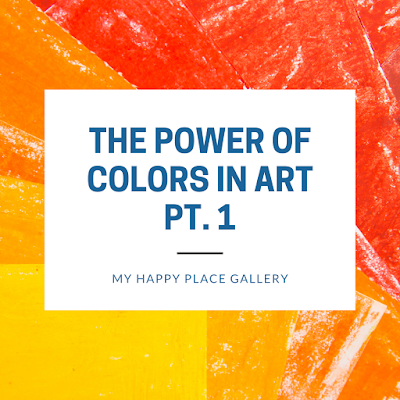The Power of Colors in Art, Pt. 3
If you’ve read our previous blogs about
colors, you’re well aware of our attitude's influence from differing hues. From
the passionate feelings that the color red brings to the calmness we feel when
we see blue, each color has its meaning. Bright and vivid colors aren’t the
only hues that can ignite emotions within us. More muted and understated hues
also evoke responses and shift our mood. In this final blog in our color
series, we’ll explain the meanings behind the shades brown, black, gray, and white.
The first color we’ll be discussing is brown.
Brown symbolizes reliability and stability and has a soothing effect. This
hue's protective impact offers a sense of protection and support to those in
its presence. Additionally, brown is the color of simplicity, hence the term
brown bag lunch. It increases our appreciation for simple things and helps us
to remain grounded. This dependable color also has negative connotations
associated with it. Many may see brown as a boring and dull color since it’s
not as striking as other colors.
Despite its lack of bright pigment, black is a
compelling color. Black symbolizes sophistication and protection and has an
intimidating hue. This forceful color represents authority and offers a feeling
of protection and security to those in its presence. It’s dominant darkness
often mystifies viewers which is why it is sometimes perceived as aggressive.
The formal and elegant appearance of black also presents a feeling of prestige
and is why we often hear the phrase “black-tie affair.” On the other hand, the
darkness of this color can lead to somber feelings and pessimism.
Gray is by far viewed as the most neutral hue
in the color wheel. The color of practicality and compromise, gray, is stable
and indifferent. It gives off a relaxing and stabilizing effect and has a
peaceful composure. The reliability of the color gray is what soothes those who
are in its presence. Some, however, view gray as an indecisive or sad color
thus the saying “gray area” to describe something unclear.
The last color on our list is white. It’s
well-known that white is the symbol of purity and cleanliness. This pure hue
perfectly encompasses all colors. The simplicity of white provides clarity and
refreshes the mind. When we view white, we’re often given a sense of hope and
openness. It makes us feel good to be in the presence of this color as it is
the hue of perfection and self-reflection. Despite the goodness and innocence
associated with this balanced color, many interpret white as a boring and empty
hue.
While the colors we’ve discussed aren’t as
vibrant as others, they are just as powerful! We hope you’ve discovered a
new-found appreciation for these neutral colors. If you haven’t read our
previous blogs on warm and cool-hued colors, be sure to check them out to learn
all about the influences and meanings behind the other colors of the rainbow.
If you’re looking to add more color to your
home, be sure to stop by our gallery and check out all of the beautiful pieces
on display and available for purchase.



Comments
Post a Comment